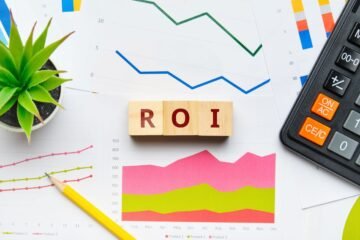The global digital circular economy market size was valued at USD 3,152.0 million in 2024 and is projected to grow from USD 3,806.8 million in 2025 to USD 17,191.4 million by 2032, exhibiting a remarkable CAGR of 24.03% over the forecast period. This exponential growth is driven by the increasing integration of digital technologies into sustainability initiatives, the rapid adoption of circular business models across industries, and strong regulatory support aimed at reducing waste and promoting resource efficiency.
Digital Circular Economy Market: Key Highlights
The digital circular economy is reshaping global industries by integrating advanced technologies like IoT, AI, blockchain, and cloud platforms with sustainable production, distribution, and consumption models. By digitizing the circular value chain, organizations are enabling more efficient resource use, improving product lifecycle visibility, and unlocking new revenue streams through innovative reuse and recycling initiatives.
Key developments include:
-
Blockchain-powered supply chains enhancing traceability and verifying the origin, composition, and recyclability of materials.
-
AI-driven predictive maintenance systems extending the life cycle of industrial equipment and consumer products.
-
IoT-enabled asset tracking facilitating real-time monitoring of product use, reuse, and return logistics.
-
Cloud-based circular marketplaces connecting stakeholders to trade refurbished goods, materials, and components.
Regions such as Europe and North America are leading the market with strong policy frameworks and sustainability mandates, while Asia-Pacific is emerging as the fastest-growing region due to rapid industrial digitalization and government-led circular economy initiatives.
Growing concerns about resource scarcity, climate change, and e-waste generation are fueling the adoption of circular practices across manufacturing, retail, automotive, construction, and electronics industries. Companies are increasingly leveraging digital tools to shift from a linear “take-make-dispose” model to a regenerative, closed-loop system.
Market Drivers and Emerging Trends to 2032
The digital circular economy market is being propelled by a convergence of environmental imperatives, regulatory pressures, and technological advancements. As organizations seek to meet carbon neutrality targets and respond to consumer demand for sustainable solutions, digitization is becoming essential for scaling circular strategies.
Key Market Drivers
1. Regulatory Push for Circularity:
Governments worldwide are implementing stricter policies aimed at reducing waste and extending product life cycles. Initiatives like the EU Circular Economy Action Plan and extended producer responsibility (EPR) regulations are compelling businesses to adopt digital solutions for tracking, reporting, and optimizing circular operations.
2. Corporate Sustainability Commitments:
Leading enterprises are setting ambitious goals to achieve net-zero emissions and zero-waste operations. Digital circular platforms enable companies to measure environmental impact, optimize material usage, and design for recyclability — key components of ESG reporting.
3. Economic Benefits of Resource Efficiency:
Circular business models reduce dependency on virgin materials and lower production costs by maximizing resource utilization. Companies can generate additional revenue through resale, remanufacturing, and product-as-a-service models — all supported by digital platforms.
4. Rise of Product-as-a-Service (PaaS):
The shift from product ownership to service-based models (e.g., leasing, subscription) requires real-time usage data and lifecycle tracking. IoT and cloud technologies provide the infrastructure to enable and scale PaaS offerings profitably.
5. Demand for Transparency and Traceability:
Consumers and regulators are demanding greater visibility into supply chains and product origins. Blockchain and digital twins offer immutable data trails, enhancing trust and enabling responsible sourcing and recycling.
Emerging Trends
1. AI and Data Analytics for Circular Optimization:
AI algorithms are being deployed to predict product failures, identify reuse opportunities, and optimize resource allocation. Predictive analytics also support demand forecasting for secondary materials, enabling better planning of reverse logistics.
2. Digital Product Passports (DPPs):
Digital IDs containing material composition, usage history, and recycling instructions are becoming a key enabler of circularity. The EU plans to make DPPs mandatory for many product categories by 2030, accelerating their adoption globally.
3. Circular Supply Chain Platforms:
Collaborative cloud-based platforms are enabling manufacturers, recyclers, logistics providers, and retailers to share data and coordinate closed-loop operations seamlessly.
4. Expansion of Digital Marketplaces:
Online platforms for refurbished products, recycled materials, and component trading are scaling rapidly. They offer new revenue streams and reduce waste by keeping products in circulation longer.
5. Integration with ESG and Compliance Software:
Digital circular solutions are increasingly integrated with ESG reporting tools, enabling organizations to quantify and report circularity metrics, carbon savings, and material reuse performance.
Why This Report Stands Out
This comprehensive market analysis of the digital circular economy provides valuable insights for technology vendors, sustainability strategists, policymakers, and investors. It offers:
-
Detailed segmentation by technology, business model, end-use industry, and region.
-
Insights into evolving regulatory landscapes and their impact on market dynamics.
-
Analysis of emerging business opportunities such as digital marketplaces, circular design software, and product-as-a-service models.
-
Investment trends and case studies illustrating successful implementation strategies.
The report also includes risk assessments and strategic recommendations to help stakeholders align with future market requirements and regulatory frameworks.
Leading Players in the Digital Circular Economy Market
Major players are investing heavily in R&D, strategic partnerships, and acquisitions to expand their capabilities and market reach. Some prominent companies include:
-
SAP SE – Offering circular economy cloud solutions integrated with ERP and supply chain management.
-
IBM Corporation – Leveraging blockchain and AI for supply chain transparency and waste reduction.
-
Cisco Systems, Inc. – Enabling IoT-based asset tracking and product lifecycle management.
-
Accenture Plc – Providing digital transformation consulting and circular business model innovation.
-
CircularTree – A pioneer in blockchain solutions for sustainable supply chain collaboration.
-
ReverseLogix – Specializing in reverse logistics platforms supporting reuse and refurbishment.
These companies are focusing on enhancing platform interoperability, strengthening ecosystem partnerships, and expanding into high-growth verticals such as consumer electronics, automotive, and fashion.
Market Segmentation and Applications
By Technology:
-
Internet of Things (IoT)
-
Artificial Intelligence (AI) and Machine Learning (ML)
-
Blockchain
-
Cloud Computing
-
Digital Twins
-
Data Analytics Platforms
By Business Model:
-
Product-as-a-Service
-
Refurbishment and Remanufacturing
-
Sharing and Leasing Models
-
Resource Recovery and Recycling Platforms
-
Digital Marketplaces
By End-Use Industry:
-
Manufacturing
-
Automotive
-
Consumer Electronics
-
Retail and E-commerce
-
Construction
-
Textiles and Fashion
By Region:
-
North America
-
Europe
-
Asia-Pacific
-
Latin America
-
Middle East & Africa
Each segment represents a unique growth opportunity, with industries such as automotive and electronics leading adoption due to high material costs and stringent sustainability targets.
Future Outlook: Trends, Opportunities, and Forecast 2025–2032
The future of the digital circular economy is characterized by deep technological integration, policy support, and a shift in consumer expectations. By 2032, digital platforms will be embedded across the entire product lifecycle — from design and manufacturing to consumption and recovery.
Key Growth Opportunities
-
Smart Cities and Infrastructure: Urban initiatives focused on zero-waste systems will drive demand for circular solutions in construction, utilities, and public services.
-
Extended Producer Responsibility (EPR) Platforms: Digitally enabled EPR systems will become a regulatory necessity, driving adoption among manufacturers and importers.
-
AI-Powered Recycling Facilities: Automated sorting and material recovery systems will improve efficiency and reduce costs in recycling operations.
-
Digital Twins for Lifecycle Simulation: Simulating entire product life cycles will help optimize circular design and resource utilization strategies.
Regional Insights
-
Europe remains the global leader due to stringent circular economy policies, particularly in the EU.
-
North America is experiencing rapid adoption, fueled by corporate sustainability targets and ESG reporting requirements.
-
Asia-Pacific will see the fastest growth, driven by industrial digitalization, rapid urbanization, and government-led sustainability programs.
-
Latin America and MEA are emerging markets with growing investment in waste management and circular infrastructure.
Conclusion
The digital circular economy represents a fundamental shift in how the global economy operates — from linear consumption patterns to regenerative, data-driven, and collaborative systems. As industries face mounting pressure to reduce waste, decarbonize operations, and create value from resources, digital technologies will serve as the backbone of this transition.
With a projected market value of USD 17,191.4 million by 2032, the digital circular economy is not only a sustainability imperative but also a transformative business opportunity. Organizations that invest early in digital platforms, data analytics, and circular business models will gain a competitive advantage, unlock new revenue streams, and contribute to a more sustainable and resilient global economy.
Kings Research says:
The digital circular economy is set to become the cornerstone of the global sustainability transition. As AI, IoT, and blockchain technologies mature, they will redefine how products are designed, used, and reintroduced into the economy. The companies that harness these capabilities today will lead the markets of tomorrow — not only driving profit but also shaping a regenerative and equitable future.
Get Full Detailed PDF Report- https://www.kingsresearch.com/blog/digital-circular-economy-market-report





